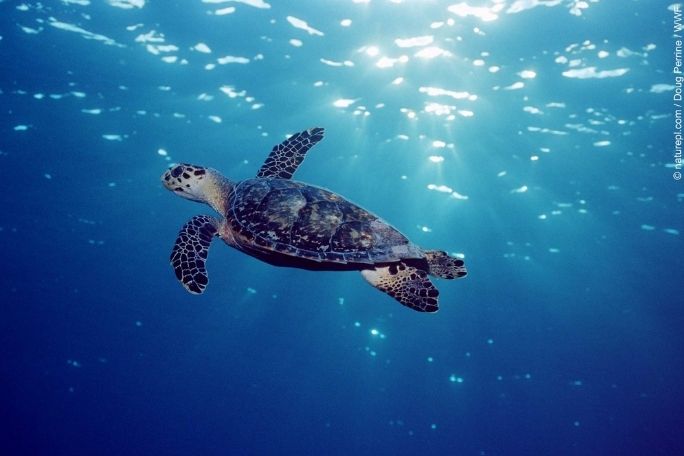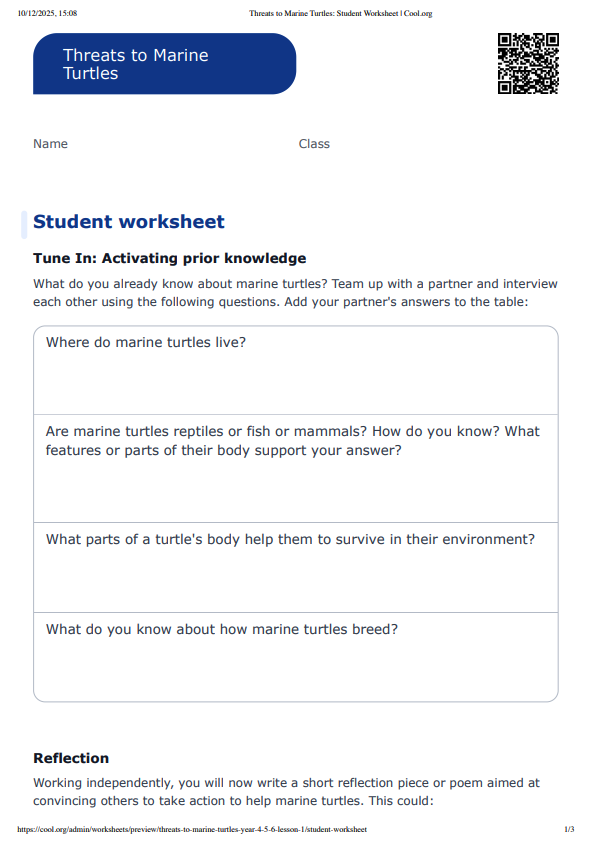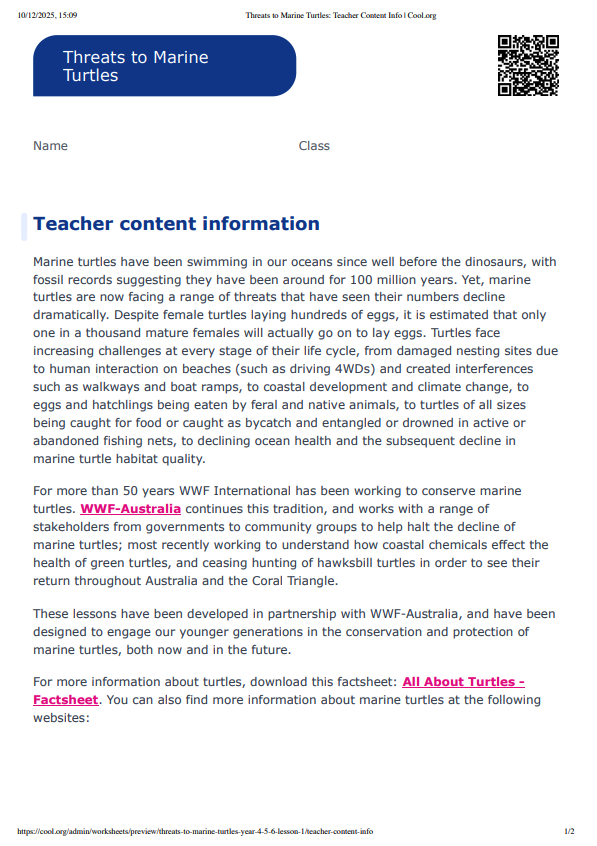Lesson summary
In this lesson students learn about marine turtles and the threats facing them. Students begin by looking at some of the physical characteristics of marine turtles and the features of their life cycle. They then work in groups to investigate the different threats to marine turtles and create a poster or presentation to share with the class. Students then participate in a guided discussion around a video describing how some people are helping marine turtles, and think about the actions we can all take to help marine turtles. Finally, students are asked to work independently to write a poem or reflective piece aimed at convincing people to take action to protect marine turtles. Note: This lesson can be followed by Design a Turtle Nest Protector – Year 4, 5 & 6 – Lesson 2.
Essential questions:
- Where do marine turtles live and what are some of their physical characteristics?
- Why are marine turtles under threat? What are some of these threats?
- What can we all do to help protect marine turtles?
Learning intentions
Students will:
- understand the threats facing marine turtles and identify actions we can take to protect marine turtles.
Success criteria:
Students can:
- undertake online research in response to a set of criteria
- present research to the class
- know about the threats facing marine turtles
- know about actions to help marine turtles.
Lesson guides and printables
Curriculum links
Select your curriculum from the options below.
Lesson details
Skills
This lesson is designed to build students’ competencies in the following skills:
- collaboration
- communication
- creativity
- critical thinking
Curriculum Mapping
Australian Curriculum content descriptions:
Year 4 Science:
- Living things have life cycles (ACSSU072)
- Living things depend on each other and the environment to survive (ACSSU073)
Year 5 Science:
- Living things have structural features and adaptations that help them to survive in their environment (ACSSU043)
Year 6 Science:
- The growth and survival of living things are affected by physical conditions of their environment (ACSSU094)
Year 5 HASS – Geography:
- The environmental and human influences on the location and characteristics of a place and the management of spaces within them (ACHASSK113)
Syllabus outcomes: ST3-10LW, ST3-11LW, GE3-2, GE3-3.
General capabilities: Critical and Creative Thinking, Literacy.
Cross-curriculum priority: Sustainability OI.2, OI.7, OI.9.
Relevant parts of Year 4 Science achievement standards: Students describe relationships that assist the survival of living things and sequence key stages in the life cycle of a plant or animal.
Relevant parts of Year 5 Science achievement standards: Students analyse how the form of living things enables them to function in their environments.
Relevant parts of Year 6 Science achievement standards: Students describe and predict the effect of environmental changes on individual living things.
Relevant parts of Year 5 HASS – Geography achievement standards: Students identify and describe the interconnections between people and the environmental characteristics of places.
Time required: 120 mins.
Level of teacher scaffolding: Medium – oversee lesson and lead students in class discussions.
UN Sustainable Development Goals
- Target 14.1: By 2025, prevent and significantly reduce marine pollution of all kinds, in particular from land-based activities, including marine debris and nutrient pollution.
Resources Required
- Student Worksheet – one copy per student OR computers/tablets to access the online worksheet
- Device capable of presenting a website to the class.
- Presentation Assessment Rubric
- All About Turtles – Factsheet
- Student workbooks and pen/pencil
- Poster making materials
Turtle Threats factsheets:
Additional Info
This lesson has been developed in partnership with WWF-Australia. WWF-Australia has been working to conserve marine turtles and the habitats they live in. Following this lesson plan is an ideal way for your school to celebrate World Turtle Day on the 23rd of May. Join with other amazing teachers and students around Australia who are taking action to conserve marine turtles.
Related Professional Learning
How To Teach Sustainability With Hope
Quick summary: This course is for both primary and secondary teachers of all subjects, but especially for English, Science, Humanities and Geography teachers who are covering climate change and the cross-curriculum priority of sustainability.




Welcome back!
Don't have an account yet?
Log in with:
Create your free Cool.org account.
Many of our resources are free, with an option to upgrade to Cool+ for premium content.
Already have an account?
Sign up with:
By signing up you accept Cool.org's Terms and Conditions(Opens in new tab) and Privacy Policy(Opens in new tab).